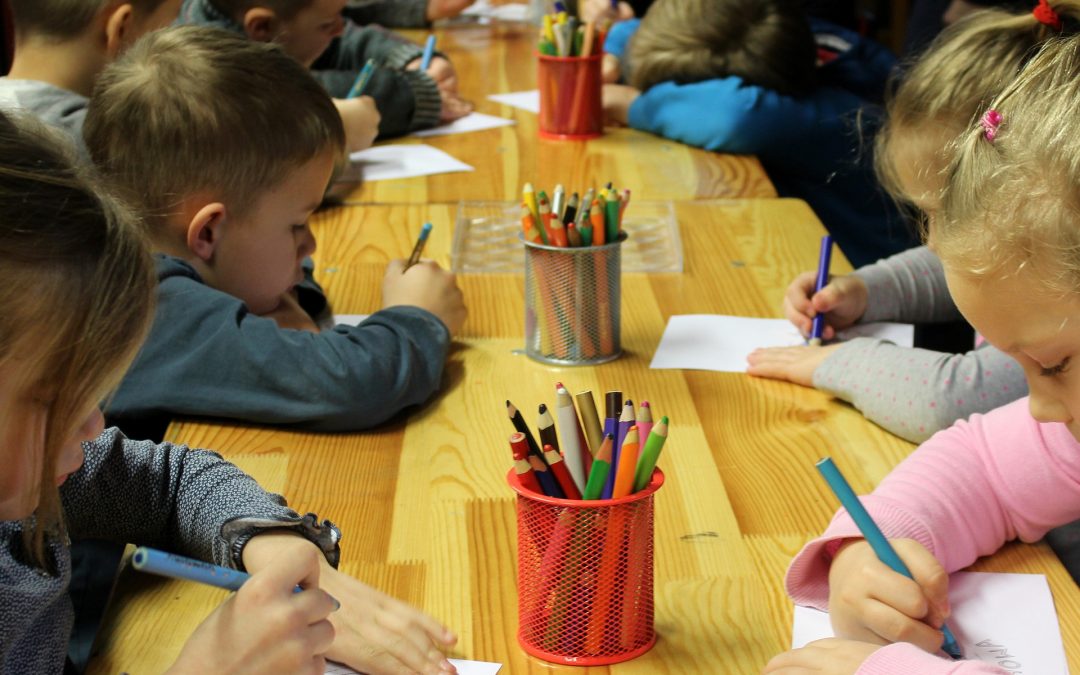
by Leslie Moldenauer | | Mind
Life is tough and sometimes things seem out of our control, where the only power that we have is the power over our emotions. That is not so easy for our youth, but providing them with a few tricks can help them to feel calm, empowered, and in control of their emotions. Here are a few breathing exercises to calm children of all ages, and put a smile back on their face.
The single most powerful thing that we can do at any given time is to work to control our breath through diaphragmatic breathing. If I had a dollar for every time I had a student tell me, “I breathe all the time, it has not worked for me yet”, I could buy myself a snazzy dinner on the town.
Here is the thing, concentrating on our breath does a few things simultaneously:
- It activates our parasympathetic nervous system. This is necessary to disengage from the sympathetic nervous system when we are under stress, anxiety, or even when feeling panicked.
- It allows our minds to slow down for a moment. Breathing exercises will allow our minds to stop overthinking about the current moment (somewhat similar to the effects of meditation, which can be challenging for some).
- If we can begin to slow our rate of breath, and in turn our heart rate, and racing thoughts….we are much more equipped to think clearly. When we are in a state of panic, rational through goes out the window and problem solving, or considering the big picture in a situation is all but impossible. This is the moment when children tend to act impulsively and get themselves into trouble in-home or at school.
The Basics-When we are anxious or stressed we tend to breathe through our chest, which has been shown to not only decrease the amount of oxygen to the brain but increases stress and anxiety. Diaphragmatic breath, also called belly breathing or breathing fully into your diaphragm, is the first thing taught in meditation or yoga and has been shown to increase relaxation and slow rate of breath along with blood pressure.
Teaching children of any age specific breathing exercises is relatively easy but needs to be repeated for it to become a habit. Dependent on your child’s age and weight, find an object to place on the belly. An adult would look to use a 10lb bag of rice or something similar, and a 1st or second grader possibly a book. Find something suitable for the size and age of the individual. Caretaker, you may want to practice this yourself before you teach it. Lie on your back in a comfortable position. A small pillow under your head and rolled up towel or blanket under your knees may help you to get comfortable. Place the weight on your abdomen. Begin to breathe, focusing on pushing the item up as you inhale, and letting it sink back down as you exhale. Both the in and out breathe should be through your nose, not your mouth. The key is slow, even breathing throughout the practice, just 3-5 minutes to start, and slowly working your way up to longer lengths of time.
Try and practice this periodically throughout the day without the weight on your belly, until it becomes more of a habit. This is the type of breathing that you should be doing throughout your day, especially if you have anxiety. Here are a few additional breathing exercises that can help your child become successful at using their breath to find calm and be centered. These can be used for children in Kindergarten through 8th grade.
Rainbow, or color breathing– This works especially well for the littles, but can be beneficial for everyone. Have them pick a favorite color, close their eyes and begin to breathe in a rainbow pattern, up and around and back down to the other end (just like a rainbow shape). Breathing in that color in their mind, or a favorite item of that color to the top of the rainbow’s bend, then exhale back to the other side and repeat. This takes the focus away from their current state to focus on the color, and works wonders for a child that cannot simply ‘breathe’. (You can find alternate variations of this technique on the Internet, creator unknown)
Following shapes-For this exercise, I recommend using a triangle or a square drawn on a piece of paper (having a clear path for inhalation and exhalation). Having a child follow the path of shape with their finger, a crayon, or a marker while focusing on their breath can be a very soothing experience. Really….it could be any shape or image that a child loves!

Blowing bubbles, squeezing Play-doh or slime. Having a child focusing only on that and deep breaths can help, much like a fidget spinner. The sensory play while breathing can help quickly to calm an irritated or anxious child.
These are just three examples of breathing exercises for all ages. Simply telling a child to practice slower breathing will not be as effective otherwise, or my least favorite statement to make to a child, ‘focus’. More on that in my article on focus here. I have used this skill without the belly practice in my small classrooms with great success. When we can not lay on the floor, I have them place one hand on their belly to practice.
These breathing exercises for children are but one small step in stretching the skills of our youth for their own emotional wellness.
Like so many practices in life, I encourage you to become educated on the proper use of essential oils. When using them, please do so cautiously, understanding that there is often misinformation on the internet. You can be assured that I support only educated and proven resources. While essential oils should not be feared they should be respected and used properly to ensure the safety of the individuals using them.
Please note that I am not a medical practitioner. The content of this website is provided for general informational purposes only and is not intended as, nor should it be considered a substitute for, professional medical advice. Do not use the information on this website for diagnosing or treating any medical or health condition. If you have or suspect you have a medical problem, promptly contact your professional healthcare provider. By using this website, you assume full responsibility and liability for your own actions.
Coping skills, resilience, and stress levels in our youngest generation

by Leslie Moldenauer | | Body, Mind
It seems that in this day in age, nearly all of us are living on high alert, high levels of stress, burning the candle at both ends. Are you able to recognize the signs of a nervous system that is constantly on high alert? What can you do about it and what are the possible ramifications if you do nothing. STRESS! Recognizing when your Nervous System is Dangerously Overactive
This is not a question of whether we are under stress, we are all under stress of varying nature, some good, some not so good. The concern is if we recover well, consistently….or if we live in a place of high alert, which is very detrimental to our body and mind. This article will not be about all the feels of an essential oil blend to help with stress, or an herbal tea to help you sleep…..but the nitty-gritty that so many of us are avoiding!
In a previous blog I talked in great detail about the sympathetic nervous system and parasympathetic nervous system, you can read that here. Here I will just dive right in.
If your sympathetic nervous system is the primary system running the show, you can find yourself suffering from things like (not an all-inclusive list)
-Physically and mentally unable to sit and relax
-Anxiety (heart palpitations/increased BP, irritability, headaches, insomnia, startle easily)
-Acid reflux, stomach aches, poor digestion,
-Chronic muscle tightness and pain
-Increased skin rashes
-Lack of productivity, forgetfulness, hopelessness, apathy, worry, paranoia
-The sensation of a lump in your throat or increasing clearing of your throat (related to acid/GERD)
If we do not pay attention, the stress could lead to further issues such as:
-Endocrine imbalances (Thyroid, adrenal, pituitary glands)
-Heart Disease
-Stroke
-Cancer
Well now that I have been a complete Debbie Downer…..(my apologies….sending you all that are suffering good vibes and hugs),
Living in a constant state of high alert, from experience is beyond exhausting, it is soul-sucking.
What can we do about it? I can say it can include a hot bath and a good book, but this kind of situation goes WELL BEYOND the typical self-case that is recommended on social media memes and website blogs.
It requires a new way of thinking and living!
It requires living with complete self-awareness.
Where is your energy going? Do you give it away? Do you have stellar boundaries?
What is your self-talk like? Do you love yourself? Do you prove it to yourself in everything you do?
Toss the importance of the to-do list, and create a to be list. (Things will get done in their time, but release them as emergency items). Those that live in high alert tend to lose sight of the order/importance of things and treat everything with the same level of urgency.
And as clique as this sounds….do the work! What is the work you might be asking…
- Keep the promises you have made to yourself. You are numero uno, and if you break one promise you have made..you are more likely to break many more!
- Find the present moment and stay in it as much as you can throughout the day. There will, of course, be time for planning future items, but those that live in the what-if future world, are more likely to live in high alert.
- Address your baggage, your shit, your trauma, whatever you call it. Avoidance means avoiding the healing process, or the integration to your new and improved self. Ask for help if you need it, seek counseling, you deserve it!
- Lose the toxicity. If you are surrounded by people who bring you down, people who are always negative, those that are codependent, or even those that are narcissistic. You can walk away, or at the very least set time limits with those people if it is a co-parent, parent, etc.
- We often talk about the ego as a bad thing, saying ‘someone has a large ego’. I used to say someone had an ego the size of Texas, but later turned out to be a malignant narcissist, when led me on a deep journey of learning……your ego is an aspect of yourself to understand.
Ego: I failed
Your Highest Self:I learned an important lesson
Ego:I am not healing
Your Highest Self: Every day I am learning and growing through life lessons.
- As you take away the urgency of a to-do list, set a practice to sit and do nothing from time to time. Why is this so hard for so many of us? We do what we do, the constant onslaught of go-go-go, to avoid what is going on in our heads. To drown it out and be blissfully unaware. In order to do the work, we have to start being aware. Our health depends on it. (Keeping my kids on their toes wondering why I am sitting on the couch simple gazing outside is simply a bonus)
As you can see, there is much work to be done, but none of it requires heavy lifting, only self-love, and self-awareness to be present in every moment.
Engaging the parasympathetic nervous system in override the stress response (sympathetic nervous system) as much as possible will begin to settle you and your symptoms, but will not happen overnight.
Steps 1-6 will help, but we still need more.
One of my Mentor’s, Dr. Deb Kern years ago taught me that in order to begin to make real measurable shifts in life I needed to fill my days with things I loved as often as I could, and I needed to remember, write down, and reinforce my dreams.
Grab a pen and notebook, find a quiet spot, and open your mind. If you have an oil blend that welcomes focus and creativity you can place that in a diffuser. This blend, from my most recent book, ‘Emotional Healing with Essential Oils’ helps to clear the energy and encourage creativity:
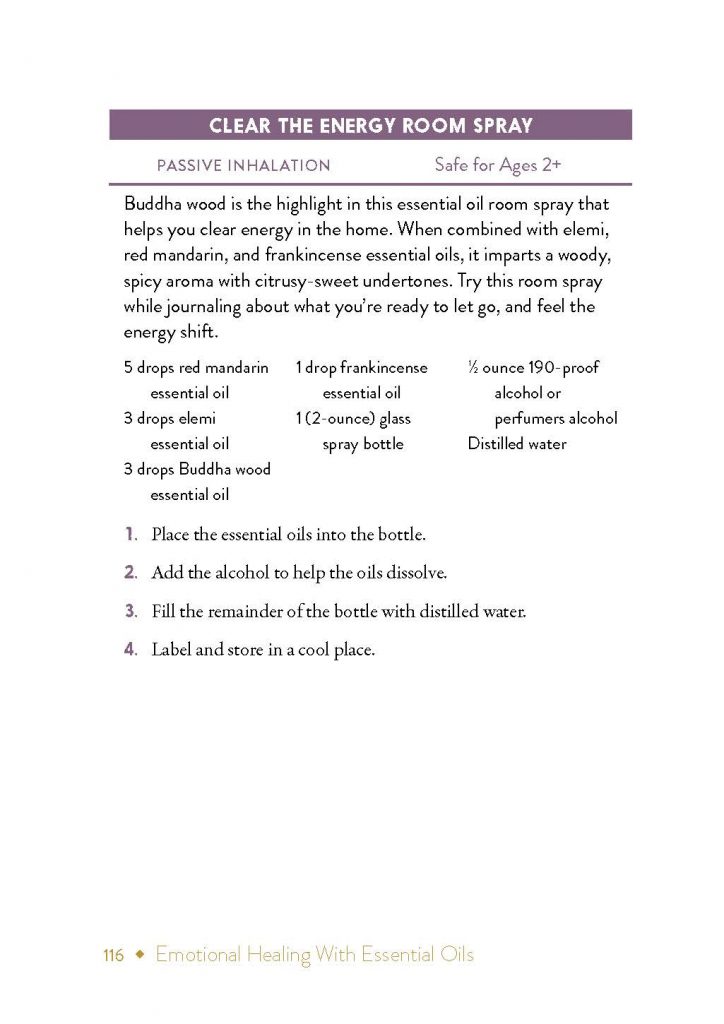
Now, draw two columns, the first entitled ‘Pleasures’, the second ‘Desires’. Do not entertain hesitation here, if it pops into your head, write it down. Spend 15 minutes with this exercise. You will ultimately hit a lull……this is completely normal and if you sit with it and push through it, the ideas will continue to flow. What do you love to do? What are you good at? What brings you pleasure? Under desires, write down your life’s goals. What do you visualize for your life?
Once you have this clearly laid out on paper, determine how much of your days are spent doing what items under your pleasures list. Trust me, there is absolutely no judgment here if the percentage of your day doing the things you love is low. It is incredibly common, and it was quite a shock to me when I discovered I needed to make big changes.
Once I began to dedicate more of my time to what I love, I began to see I had more energy, I smiled a lot more often, and my creativity began to blossom, and well I had fewer hours being exhausted and feeling like crap!
Remember this is but once piece of a very large puzzle, but it is imperative to living a happy life. No one wants to wake up, go to work, come home, run errands, be a chauffeur, a chef, (insert all the hats you wear), plop in bed exhausted only to wake up and do it all over again. This is the definition of a recipe for exhaustion.
Everything I have shared today comes from firsthand experience. I have shared a few of my previous blogs below to help expand on this topic.
Click here for more of my story.
Sending you wishes for abundant health & happiness
Leslie xo
Facing our emotional triggers to create positive change
Take Time to Celebrate your Success….Honor your WINS
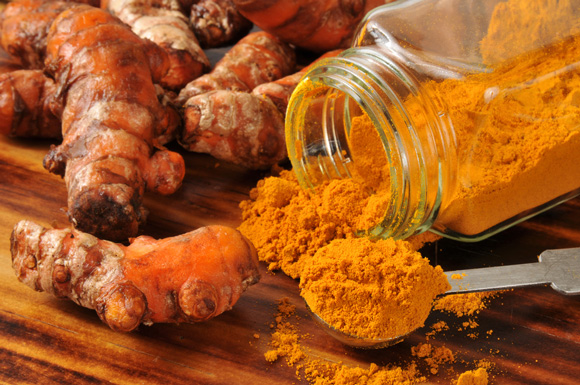
by Leslie Moldenauer | | Food, Mind
Lifeholistically is a huge fan of emotional healing using essential oils, clearly defined in the latest book, Emotional Healing with Essential Oils- Get your copy here. Wellness requires a full range of methods and efforts, including what we put on our plates. Proper health begins in the kitchen. In looking at mental wellness, there are many things we can put on our plate to enhance it. These are the top foods to support mental wellness.
There are four pieces that I like to look for in food; call them the fab four. Those are dopamine (tyrosine precursor), choline, serotonin, and GABA-rich foods. Each supports mental wellness in the gut and the brain.
DOPAMINE RICH FOODS
Dopamine is a neurotransmitter in the brain. It is a chemical that transports information between our brain’s neurons. Dopamine helps to regulate attention learning and supports healthy emotional responses (Tesch, 2023). This neurotransmitter also plays a role in reinforcement to influence addictive behaviors. On the flip side, when we consume dopamine-rich foods, the brain is flooded with positive feelings, encouraging us to eat those foods repeatedly. Tyrosine-rich foods enhance dopamine production; without one, the brain will stave for the other.
Turmeric is a spice (root) used in ancient Indian and Middle Eastern cuisine for centuries. Turmeric shows great promise to help fight depression due to its higher dopamine levels.
A recent study has shown that turmeric is more effective at treating depression than Prozac alone (Sanmukhani et al., 2013). Ideally, cook with turmeric as often as possible. If capsule form is preferred, make sure it contains black pepper, as the two significantly increase absorption.
- Turmeric reduces Inflammation: Chronic inflammation in the brain is linked to various mental health conditions, including depression and anxiety. Curcumin has anti-inflammatory properties that may help reduce brain inflammation, potentially alleviating symptoms of these conditions.
- Boosting Brain-Derived Neurotrophic Factor (BDNF): Curcumin has been shown to increase the levels of BDNF, a growth hormone in the brain (Sarraf P et al., 2019). Low BDNF levels are associated with conditions like depression and Alzheimer’s disease. By increasing BDNF, curcumin may support brain health and help combat these conditions.
- Antioxidant Properties: Oxidative stress, where there is an imbalance between free radicals and antioxidants in the body, has been linked to mental health disorders. Curcumin’s antioxidant properties can help neutralize free radicals, potentially protecting the brain from oxidative damage.
*Turmeric in amounts higher than typically consumed in food is not for everyone. Use caution: Pregnancy, gallbladder issues, diabetes, GERD, hormone-sensitive conditions, iron deficiency, surrounding surgery.
*It is important to note that while there is promising research on curcumin’s potential role in mental health, it is not a standalone treatment for severe mental health conditions. It can be part of a holistic approach that includes a balanced diet, regular exercise, and professional mental health care. Always consult a healthcare provider before using curcumin as a supplement or making significant dietary changes to address mental health concerns.
Below is a must-try recipe for a cinnamon turmeric smoothie.
Ingredients:
Unsweetened coconut milk 12oz (can be replaced with almond or oat milk)
Half of a frozen banana
2 Organic pitted smashed-up dates
Ground cinnamon 2 tsp
Ground turmeric 1 tsp
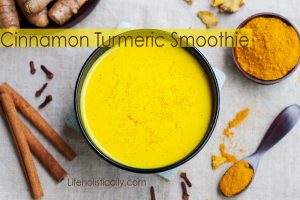
Blend well and enjoy.
Other dopamine-rich foods include lentils, nuts such as almonds and walnuts, and seeds such as pumpkin and sesame. Animal-based foods, including eggs, beef, chicken, turkey, and organic dairy, can also be eaten.
CHOLINE RICH FOODS
Choline is brain food. “One of the primary functions of choline is helping brain cells produce acetylcholine, a key neurotransmitter for mental focus and learning. A choline deficiency can result in poor concentration, memory, mood changes, and other cognitive impairments, especially as someone ages” (Kubala, 2023).
According to the book The World’s Healthiest Foods, shrimp, eggs, and scallops contain the highest amounts of choline (Mateljan, 2007). What about us vegans? Brussel sprouts, broccoli, cauliflower, asparagus, organic chicken, and wild salmon. Here is more about how they work.
- Salmon: Salmon is rich in choline and provides omega-3 fatty acids, known for their positive effects on brain health and mood regulation.
- Chicken: Poultry, especially chicken, is a good source of choline. Choline forms phospholipids, which are essential for brain cell membranes.
- Broccoli: This cruciferous vegetable contains a significant amount of choline. It also provides essential antioxidants and nutrients that support overall brain health.
- Brussels Sprouts: Like broccoli, Brussels sprouts are rich in choline and other nutrients that contribute to healthy brain function and mental wellness. A one-cup serving of this cruciferous vegetable contains 130% of the daily recommendation of vitamin K, a nutrient that may improve cognition as we age. The following study published by the University of Angers in France found a correlation between increased Vitamin K and enhanced mental abilities (Chouet et al., 2015).
Including choline-rich foods can help support cognitive function, memory, and mood regulation, contributing to overall mental wellness.
SEROTONIN RICH FOODS
Serotonin is a chemical that acts as a mood stabilizer. It is also responsible for healthy sleep. Serotonin is a feel-good chemical that is synthesized through tryptophan. These are the foods to consume daily, as the body cannot produce tryptophan.
Chia, sesame, sunflower, flax, pistachios, almonds, and cashews are all great choices. There is so much goodness in these seeds and nuts; be sure to consume them every day.
Cannot eat them due to intestinal pockets? Other foods include salmon (only wild), chicken, turkey, uncooked oats (overnight oats are perfect), and beans.
Try this overnight oats recipe:
Old-fashioned oats 1/3 cup
Organic coconut yogurt (full-fat coconut crème can be an alternative) ½ cup
Small apple cut up or ½ of a med sized (my favorite is Gala or Pink Lady)
Oat milk ½ cup (almond and coconut are alternatives)
Ground cinnamon 1 tsp
Pinch ginger
Pinch sea salt
Crushed walnuts 2 tbsp
Dried cranberries 1 tbsp
Chia seed 1 tbsp
Add all ingredients into a glass mason jar and pour in nut milk. Do not shake. Store in refrigerator overnight. Mix well in the morning. Add more milk if necessary, and enjoy!
GABA RICH FOODS
The last up is GABA. Gamma-aminobutyric acid is an amino acid produced naturally in the brain. GABA plays a crucial role in brain function and mental health. It’s an inhibitory neurotransmitter, meaning it helps regulate brain activity by reducing neuron excitability. Adequate GABA levels are associated with reduced anxiety, improved mood, and enhanced mental wellness. While you can’t get GABA directly from food, certain foods may support GABA production and receptor function. These foods include:
Whole Grains: Brown rice, whole wheat, and oats contain glutamic acid, a precursor to GABA. Consuming whole grains can indirectly support GABA production.
- Beans: Soybeans (organic only) and lentils are good sources of glutamic acid, supporting GABA synthesis.
- Fish: Fish wild salmon contain high taurine levels, which can stimulate GABA production in the brain.
- Nuts and Seeds: Almonds, walnuts, sunflower seeds, and others are sources of glutamic acid and may contribute to GABA production.
- Fermented Foods: Some fermented foods like kefir, yogurt, and kimchi contain beneficial bacteria (probiotics) that may positively influence GABA production in the gut.
- Herbal Tea: Camellia sinensis, also called tea plant, is used to make most traditional caffeinated teas, including black tea, white tea, oolong tea, and green tea. Tea plant naturally contains GABA.
GABA’s Effect on the Brain and Mental Health:
- Anxiety Reduction: GABA’s inhibitory nature helps calm the brain and reduce anxiety. Low GABA levels have been linked to anxiety disorders, and increasing GABA activity can alleviate symptoms (Gauthier & Nuss, 2015).
- Stress Management: GABA helps regulate the body’s stress response by inhibiting the overactivity of the brain’s excitatory neurotransmitters (Hepsomali et al., 2020). This can lead to improved stress management and mental resilience.
- Mood Enhancement: GABA can promote relaxation and emotional balance, potentially aiding in mood regulation and preventing mood disorders like depression.
- Improved Sleep: GABA’s calming effects may support better sleep quality, helping alleviate insomnia and improve overall mental well-being.
It’s important to note that the relationship between dietary GABA precursors and increased GABA levels in the brain is complex, and individual responses can vary. While incorporating GABA-supporting foods into your diet may offer some benefits, addressing mental health concerns should involve a comprehensive approach, including professional guidance, stress management, and other lifestyle factors.
Read more about GABA, here.
When we add the right foods to our plate alongside proper rest, hydration, exercise, and the introduction of complementary therapies such as essential oils, acupuncture, yoga, qi-gong, meditation, and others, we have a much better chance at restoring/maintaining the state of our mental wellness. These are the top foods to support mental wellness.
References
Chouet, J., Ferland, G., Féart, C., Rolland, Y., Presse, N., Boucher, K., Barberger-Gateau, P., Beauchet, O., & Annweiler, C. (2015). Dietary vitamin K intake is associated with cognition and behaviour among geriatric patients: The clip study. Nutrients, 7(8), 6739–6750. https://doi.org/10.3390/nu7085306
Gauthier, I., & Nuss, P. (2015). Anxiety disorders and GABA neurotransmission: A disturbance of modulation. Neuropsychiatric Disease and Treatment, 165. https://doi.org/10.2147/ndt.s58841
Kubala, J. (2023, February 21). 16 foods that are high in choline. Healthline. https://www.healthline.com/nutrition/foods-with-choline
Kulkarni, S. K., Bhutani, M. K., & Bishnoi, M. (2008). Antidepressant activity of curcumin: Involvement of serotonin and dopamine system. Psychopharmacology, 201(3), 435–442. https://doi.org/10.1007/s00213-008-1300-y
Mateljan, G. (2007). World’s healthiest foods: Essential guide for the healthiest way of eating. GMF Publishing.
Professional, C. C. medical. (n.d.). Gamma-aminobutyric acid (GABA): What it is, Function & Benefits. Cleveland Clinic. https://my.clevelandclinic.org/health/articles/22857-gamma-aminobutyric-acid-gaba
Sanmukhani, J., Satodia, V., Trivedi, J., Patel, T., Tiwari, D., Panchal, B., Goel, A., & Tripathi, C. B. (2013). Efficacy and safety of curcumin in major depressive disorder: A randomized controlled trial. Phytotherapy Research, 28(4), 579–585. https://doi.org/10.1002/ptr.5025
Sarraf P;Parohan M;Javanbakht MH;Ranji-Burachaloo S;Djalali M; (n.d.). Short-term curcumin supplementation enhances serum brain-derived neurotrophic factor in adult men and women: A systematic review and dose-response meta-analysis of randomized controlled trials. Nutrition research (New York, N.Y.). https://pubmed.ncbi.nlm.nih.gov/31279955/
Tesch, D. (2023, September 25). Foods that can boost your mental health. HealthPartners Blog. https://www.healthpartners.com/blog/can-food-affect-your-mood
Like so many practices in life, I encourage you to become educated on the proper use of essential oils. When using them, please do so cautiously, understanding that there is often misinformation on the internet. You can be assured that I support only educated and proven resources. While essential oils should not be feared they should be respected and used properly to ensure the safety of the individuals using them.
Please note that I am not a medical practitioner. The content of this website is provided for general informational purposes only and is not intended as, nor should it be considered a substitute for, professional medical advice. Do not use the information on this website for diagnosing or treating any medical or health condition. If you have or suspect you have a medical problem, promptly contact your professional healthcare provider. By using this website, you assume full responsibility and liability for your own actions.
Nutritional Approaches to Stress and Anxiety

by Leslie Moldenauer | | Mind
Many children do not know how to cope with the world around us or to thrive in today’s society. The lack of coping skills, resilience, and stress levels in our youth is one definitive reason for the rapidly growing problem. Life is not the same as it was when I was a child; the challenging increase of electronics, video games, and the Internet. YES, I did just age myself a bit, all good.
There are many arguments for why the issue is a rapidly growing problem:
The decrease in outdoor playtime. The National Recreation and Park Association state that, “Children today spend less time outdoors than any other generation, devoting only four to seven minutes to unstructured outdoor play per day while spending an average of seven and a half hours in front of electronic media” (1). I was outside all day and only came in when the musical sound of the triangle echoed through the neighborhood. Ok, that was not my mom, but it was our neighbor with 17 children.
Children spend a massive amount of time with their heads in some electronic device, which has been shown in research studies to increase the chance of mental illness. Dr. Jean Twinge, San Diego State University psychologist and Dr. W. Keith Campbell, University of Georgia psychology professor found that after only one hour of screen time that many children exhibited lowered self-control and greater emotional instability than that or their peers (2). All parents, myself included struggle with limiting our children’s screen time. Now that I have a teen, it is only getting harder.
Administrators restricted children’s movement in school. A report by the Centers for Disease Control, which analyzed dozens of studies about how physical activity affects classroom performance, found that “recess and physical education contributed positively to the academic and behavioral performance of students” (3). Kids need more movement in school, not less. Gym class is only a couple times per week, if at all, and recess is shorter than the time it takes me to walk a city block. The lack of social interaction limits children’s ability to learn and increases the likelihood of acting out in the classroom.
There is an increase in media presence, creating fear of current events. More and more evidence points to the increased volume of media messages and a rise in fear and anxiety in children. Video games can and do alter reality for children, combining how frightening the news can be for some and accepting it as a harsh reality for others. A genuine struggle with mental wellness is the result. From March to May 2006, a survey was conducted of 218 Kindergarten through 6th-grade children regarding their fright reactions to the news. Results showed that 35.3% of children reported being frightened by the news (4). We can keep that TV off at home, but as they get older, they are exposed in other ways. For example, my 12 and 14-year-old boys are watching news related reports at school. One example is CNN 10. What is the answer?
Active shooter drills in school are a concerning issue. I participated in a three-hour training for this very purpose, and it was frightening. Barricaded doors did not stop the simulated shooter. We were taught to run away from the shooter in a zig-zag pattern, and many were shot with airsoft guns. This training was an adrenaline-pumping mad rush that left me exhausted for the rest of the day and contemplative long beyond that. Is this a misguided tool or a necessary one? Undoubtedly, the students at Columbine would have been more prepared to exit through a door that was just out of arms reach rather than hide under a desk awaiting the perpetrators’ arrival had they gone through training like this? But what does this do to the mental status of our children? What is the price? A 2018 survey by the Pew Research Foundation determined that, despite the rarity of such events, 57% of American teenagers worry about a shooting at their school (5). I believe this fear goes back to the issue of our media, and despite this being a rarity, we are doing a bang-up job at increasing anxiety levels in more than half of our students.
I could go on and on! Believe me, when I say that I am not immune to these issues, it is why I am tackling this subject today.
My boys love their Xbox. They increasingly dislike school because they are rarely allowed to speak, move about, or converse with their friends. Getting them outdoors outside of their involvement in soccer sometimes requires force. Being a single mom with multiple jobs requires me to schedule family time and put it on the calendar because even I am attached to my electronics more than I care to be sometimes. Modeling? Quite possibly, but this mom has to make ends meet just like millions of other households. I am no perfect mom, and in fact, I may struggle more than others as I do it all alone and make plenty of mistakes; life is hard for most all of us, there is no one answer to all the issues at hand.
Outside of academics, our children should be taught how to be good citizens, practice this at school, help their peers and their community, grow gardens, eat healthy food, teach them why bullying is wrong, and be taught about mental health! Yes, they should also be shown that at home, but that is not always happening. The increase of violence and disregard for human life in society points us to this conclusion.
Speaking from experience, when I am under large amounts of stress, my parenting skills take a hit. My energy oozes over to my kids, and I can see they began to argue and bicker more when I started to pay attention. Their anxieties increase, their social skills decrease; we all temporarily fall.
To be very clear, I will never be one to give parenting advice and just share my own experiences. As with anything in life, take what resonates and ditch the rest.
I share with my boys when I am under stress and why, for a variety of reasons. (I do not share all) Kids have stress! I am in school with them every day; I see it with all the kids. So, in my sharing that I have pressure too, they know that they are not alone. They know I am not perfect. They can visually see me working on my stuff, not ignoring it, not burying it, and it encourages them to learn these things much earlier than I ever did. I teach them tools now. This is one small way that I can empower them to learn what self-love means and that it is one small piece of taking care of their mental wellness.
I have many tools to my disposal, and I teach them as much as they are open to learning.
Laughter and movement are great medicine for anyone feeling overwhelmed or stressed. Be sure to hug your family often and keep the dialogue open, say what needs to be said, and take the time to listen. Live for today, treasure every moment, and love with all your heart.
Sending you all wishes for abundant health and happiness,
Xo Leslie
References
(1) https://www.nrpa.org/uploadedFiles/nrpa.org/Advocacy/Children-in-Nature.pdf
(2) https://psychcentral.com/news/2018/11/11/too-much-screen-time-linked-to-anxiety-depression-in-young-children-and-teens/139931.html
(3) https://www.additudemag.com/the-right-to-recess/
(4) https://www.tandfonline.com/doi/abs/10.1080/01463373.2012.669340?journalCode=rcqu20#.VElEJ2eIiqN
(5) https://www.theatlantic.com/magazine/archive/2019/03/active-shooter-drills-erika-christakis/580426/
Breathing Exercises to Calm Children of All Ages
STRESS! Recognizing when your Nervous System is Dangerously Overactive

by Leslie Moldenauer | | Mind, Spirit
We cannot think the things we’ve always thought and expect positive change in our lives. Today I want to talk about facing our emotional triggers to create positive change.
Facing Emotional Triggers to Create Positive Change
Comfort and change cannot possibly live in the same house at the same time.
Think about a statement your parents may have told you when you were young, that doing the same thing repeatedly and expecting a different result is the definition of, insanity…right?! The same goes for our thinking.
Our thoughts, especially repetitive ones, create our reality, and triggers will present themselves to help us to question our beliefs, to challenge the paradigm. It is a great feedback loop that’s purpose is to help us grow and evolve; only many of us stay stuck. Everyone struggles with this at times. Think of a time when you decided you wanted to buy a new car and had one in mind; you would begin to see more of that exact model on the road than you ever had before. The more you think about something you’re struggling with, the more it’s going to present itself in your life. This is a gift.
What is a trigger?
An emotional trigger is anything that leaves us feeling uncomfortable, ideally showing us areas in our lives that result in us feeling angry, but we are not sure why. Initially, it can give us the feeling that we need to stay away from that person. More often than not, it is someone holding up a mirror to show us something that we could improve upon somehow.
One scenario could look like this:
You find yourself creating and bringing people into your life that trigger your struggles with speaking up for yourself, and you tend to let others take advantage of your generosity and gentle nature. The trigger happens because they so eloquently speak up for themselves, and you have witnessed them being their advocate quite successfully. This may continue until you can flex that muscle and have the courage to speak up for yourself when needed. Those triggers are there to encourage your growth.
I recently visited a dear friend and spent a week having deep and intense, and sometimes gut-wrenching conversations with her and her family. Seemingly out of the blue one morning, my friend’s friend, also staying in the home, sat down across the room from me and announced, “You have triggered me since you have gotten here.” If I am honest, I was not prepared for that. I understand what my triggers are, of course, not all of them, but I know what it means, and I have never had anyone bring them to me before for discussion. I took a breath and said, “Let’s talk about that.”
She proceeded to tell me with utmost honesty and courage because it takes great courage to have these conversations, that when I walk into the room, I never hide my feelings or wear a mask. If I am happy, she knows it, and if I am not, she knows it. I have no poker face, especially when I am comfortable. She proceeded to say that throughout her childhood, she had to wear that smile. To be jovial and cheery and upbeat, no matter how she felt. She wore masks and carried this with her into adulthood. Can you close your eyes and see a happy smiling face and an upbeat voice saying, “I am doing great,” even if that was not even close to the truth? Perhaps you do this too?
So, in her seeing me never do that, she was triggered. I challenged that belief in her life. I made her uncomfortable. She thanked me for that as it was reminding her that it was ok to do the same. She could be herself and be safe. That she would begin to heal if she could just be herself, no matter who was in the room, and not be so concerned about how that made others feel.
I was not always this way with everyone. I may seem very shy to some, and in many cases, standoffish. Judgments are what we innately do as human beings until we learn another way, right?
What I do when you first meet me is read your energy, watch your body language, and learn about you without ever asking a question. She responded that “she could feel that, and it made me very uncomfortable like you were judging me,” but that was not the case. It was my holding up the mirror so she could see something in herself that made her uncomfortable. So in this conversation, we had both learned about ourselves. What we interpret about another might not always have to do with them, but often does point to something about us.
Triggers can go much deeper than this and are not always healthy. Here is another example.
A narcissist and an empath is often a toxic meeting of souls. A narcissist does not need to be formally diagnosed, at least not with my experience. Mirroring, projection, and triggers are very common in this relationship. The narcissist may trigger those things in you which need healing, but sometimes in a very toxic, brash, unhealthy, and damaging way before they discard you and move on to someone else. Sometimes it is not even your ‘stuff,’ but their own. The narcissist will draw in an empath because they like how the empath makes them feel. Why? Oh dear empath, because you are SO MUCH STRONGER than you ever give yourself credit for.
(If you have suffered at the hands of a narcissist, I recommend the work of Melanie Tonia Evans)
This topic is a blog all in of itself, but here, in regards to triggers, whether it is the narcissist honing in on your every weakness or seeing in them something that you need to heal, the triggers are strong in this relationship. Always remember you need to work on yourself; others can only be your mirror. I recommend getting far away from this type of mirror. You can learn about yourself without the toxicity and destruction that comes with this type of relationship.
What are the first steps toward really facing these triggers?
First and foremost, it is important to take accountability. When you identify a trigger, be honest with yourself. Where does this come from? Is this rooted in reality or another’s expectations growing up? Or something else entirely? What would it look like if you were in control of your reactions? How amazing would it feel to live life by your own choices and your standards? These self-limiting beliefs about yourself are indeed self-deception. You have more power in this than you have ever let yourself believe. You do have this control, but only when you identify and work through them.
Can you identify it?
Ten years ago, I had no idea what triggered me. This knowing came through life experiences, living, and growing and learning about me. It came from conversations with friends like the one I mentioned above. If you have yet to identify with these things, do not fret, where attention goes, energy flows, and you can quickly begin to notice.
How do you begin to take notice? How do you start to connect with your body? Does someone have the ability to affect your emotional body? Is there someone you can think of that makes you uncomfortable? Angry? Do they consistently do something that makes you want to avoid them? What happens in your body when they come near? Tension? Increase heart rate? Irritability? Maybe even disgust? Have you ever considered why? Are they too boisterous? Talk too much? Complain too much? Do they have something you desire? These things can and do trigger the best of us.
The goal is to determine why it bothers you. Do you wish you were more boisterous? More yourself? Do you have a lot of negative self-talk, wanting to turn that around, and hearing someone being equally negative upsets you? Then that person is triggering that very behavior in you that you do not like! Begin to take notice. Use it as fuel for change.
What are some of the most common triggers?
To be understood
To be in control
To be respected
To be valued
To have freedom/sovereignty
To feel safe
To be heard
To have your boundaries respected
These are very reasonable expectations and triggers; just remember everyone does not have your heart. It is an essential aspect of beginning to face your triggers head-on.
It is all about growth, and it will not be comfortable. You are where you should be.
Will all of your triggers completely go away? Maybe, maybe not. If you can get to a point where you can quickly identify it, and move through the emotion, rationalize the reality of it, and move forward. More times than not, the other person has no idea that they are that mirror for you. You can determine if talking to them will help or not. For many, this is not in their scope of thought, and it might offend them. If you feel they are doing it on purpose, you have the right to have that discussion, and you have the right to walk away from that relationship if it is not feeding your soul.
Take care of yourself!
xo Leslie
Take Time to Celebrate your Success….Honor your WINS
The Chakra Series: The Heart Chakra Anahata
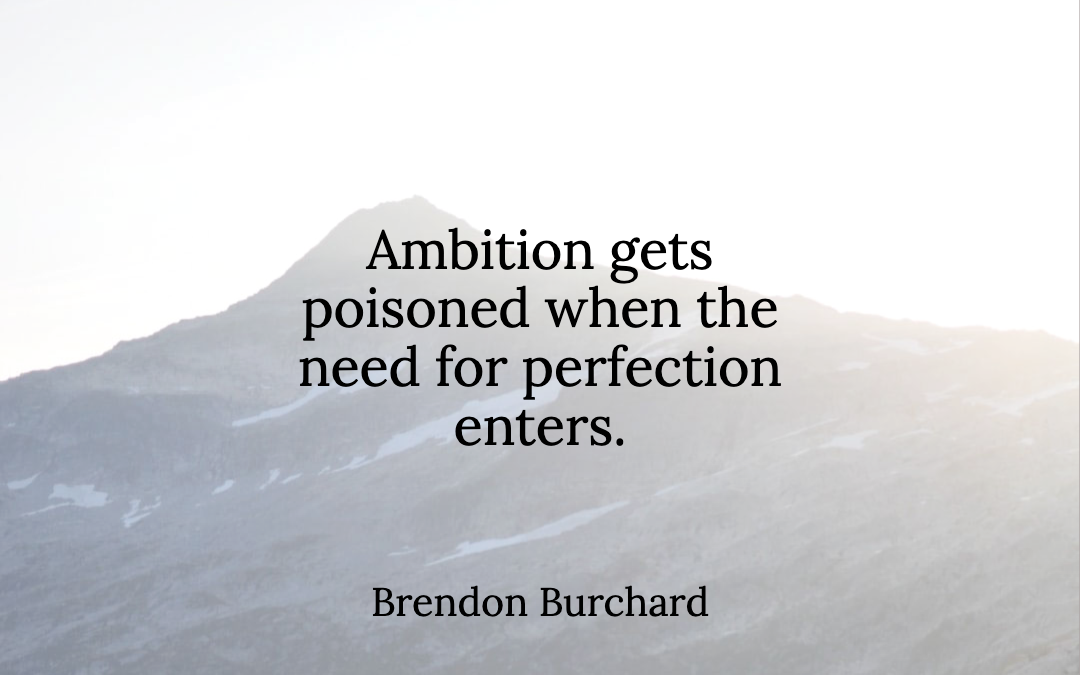
by Leslie Moldenauer | | Mind, Spirit
What are the self-limiting beliefs that are holding you back? Do you often feel like you are not good enough?
We all have something, many of us multiple things that we believe as a result of our childhood or a traumatic event in our adult life that somehow hold us back and keep us playing small…..maybe some things are still muddy and unclear, that may come to you in an unexpecting moment like a light bulb or maybe even like a strike of lightning moment. This may be a moment where you will be able to pinpoint a thought or belief that you could not do previously and it makes so many things clearer than they have ever been.
As a child, I always had a nagging from my Dad that no matter what I did, it was not good enough (he phrased it as ‘could have been better’).
**Even at a thin 123lbs with muscles from here to there in high school…he ‘lovingly’ pinched my handles.
**When I scored 4 goals in a single soccer game, which was common, I was told how it could have easily been 5 or 6 if I had focused.
**And my favorite (which so many of you have heard time and time again), ‘If you only applied yourself in school, those ___’s could have been ____’s. For me, it was ‘could have been A’s’.
These are only but three examples…and as a result, I held myself back from my dreams, life experiences, and greatness. I even held the company of people who played this exact role in their own lives…and who held my beliefs for me, reinforced them…and I never even saw it.
When I was just barely 40, and my Dad had already passed, I paid a visit to my Mom and brought with me a journal that would prove to be very valuable in my journey. I sat down one afternoon in the California summer sun and on a whim wrote down all of my self-limiting beliefs…all of the things I felt were holding me back.
I pondered….and I learned a lot about myself.
And then after everyone but my Mom and I were asleep…I brought them to her, particularly my ‘not good enough’ syndrome. The only thing that was different at that moment was I knew I was good enough….I just felt someone else, a key person in my life…didn’t.
We sat up into the wee hours of the morning talking and crying and laughing. I learned that night that my Dad (I miss him dearly) mirrored to himself and others exactly how he was treated his whole life.
His brother, only 5 years his senior, raised him, as their own Father died in the war when my Dad was a mere 3 years old (that math is staggering for two young boys)….and my Uncle, well-meaning, was also a perfectionist….nothing was quite good enough.
My Mom gave me many examples, but this one stuck with me, even to this day.
My Dad came here to America from Germany when he was 18 on a boat with nothing but the clothes on his back, scared but brave because he could no longer live under the scrutiny and wanted a better life.
He struggled as he did not know the language, but he met my Mom shortly thereafter, made something of himself, and raised two strong women…even through all of this, turns out, it was because of all of this.
Fast forward to the story….some (40) years later when my Uncle came to visit here in America……he literally walked straight into the back garden, my Dad’s pride and joy, and proceeded to trim and cut and mow…for HOURS…..because my Dad had not done anything right….only at this point, my Dad was too ill to care.
It was that moment that I truly realized the power of mirroring and of projection….and rather than being angry with my Dad, I felt lucky…..because he shaped me..and without all of that I would not be exactly who I am today, incredibly strong and able to take on everything life has handed me.
The next day I wrote a letter, forgiving him as well as myself..and vowed to sever that lineage of perfection at that very moment…and burned that letter in the California sun.
Why am I telling you all of this?
I am a true believer that in me, in you, in all of us sharing these stories that we:
1. Do not feel alone.
2. Are more likely to speak up and share our stories with those that matter the most.
3. WIll be able to break free from our past, our self-limiting beliefs, and those who are holding us back to shine as the amazing beings we are…..because life is too short to do anything but.
Perfection is unattainable, undesirable….mistakes happen and without them, without gracefully acknowledging them, we would never stretch and grow and transform.
Sending love to you all 
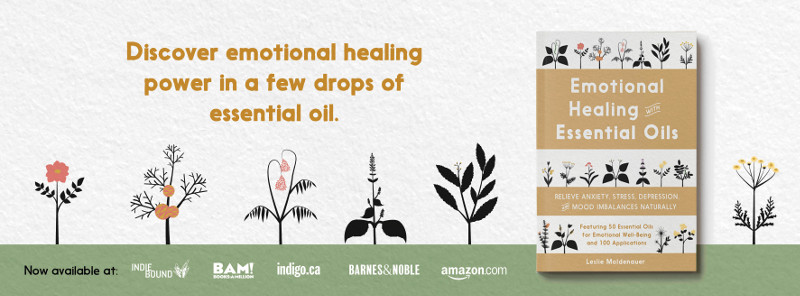
Available for Pre-Order Now!
Like so many practices in life, I encourage you to become educated on the proper use of essential oils. When using them, please do so cautiously, understanding that there is often misinformation on the internet. You can be assured that I support only educated and proven resources. While essential oils should not be feared they should be respected and used properly to ensure the safety of the individuals using them.
Please note that I am not a medical practitioner. The content of this website is provided for general informational purposes only and is not intended as, nor should it be considered a substitute for, professional medical advice. Do not use the information on this website for diagnosing or treating any medical or health condition. If you have or suspect you have a medical problem, promptly contact your professional healthcare provider. By using this website, you assume full responsibility and liability for your own actions.













